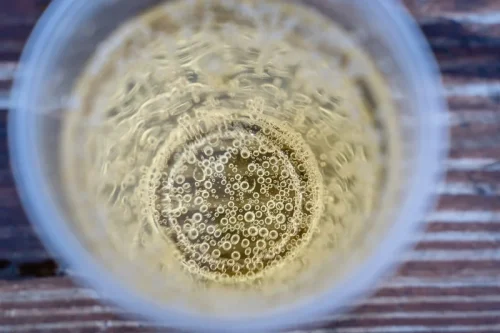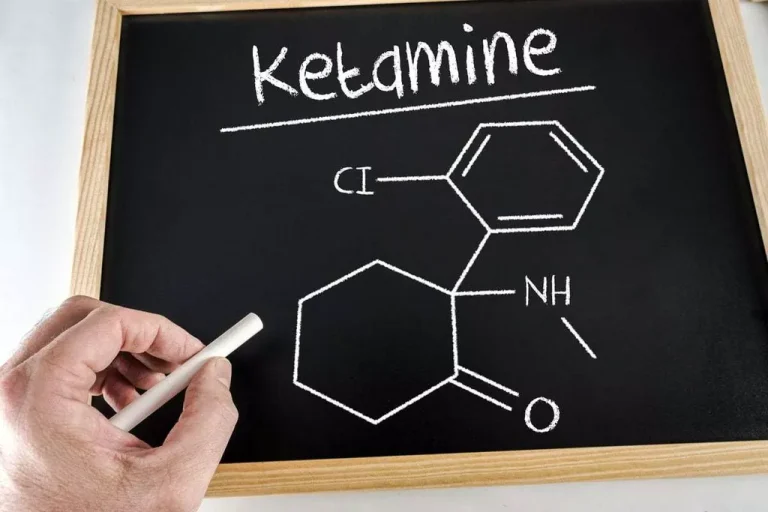Alcoholic hepatitis Diagnosis and treatment

The liver is located on the right side of the abdomen, just below the ribs. A large organ, it performs many functions essential for good health. Among other things, the liver produces and secretes bile, a fluid that helps digest fats; metabolizes carbohydrates, fats, and proteins; and produces substances that are essential for blood clotting.
Fatty liver disease
In alcoholic FLD, the transition to cirrhosis related to continued alcohol consumption is well-documented, but the process involved in non-alcoholic FLD is less clear. Research suggests that losing 7 to 10% of your body weight can reduce liver fat and fibrosis, a type of scarring that damages the liver. Aim for a balanced diet rich in fruits, vegetables, whole grains, lean proteins and healthy fats while limiting added sugars, refined carbohydrates and saturated fats. NAFLD is often diagnosed through medical history, blood tests, physical exams and imaging tests, such as ultrasound or MRI. These methods can help reveal fatty deposits in the liver and rule out other causes of liver damage. Well, vaccinations are an important preventive measure in patients with cirrhosis because when the liver is scarred, patients are at higher risk of complications from certain infections.
Medicines to reduce liver swelling, called inflammation

The ELF also demonstrated superior fibrosis discrimination ability compared with different biological tests, such as the AST to platelet ratio index (APRI) or fibrosis-4 (FIB-4) index [176,177]. In summary, a combination of non-invasive diagnostic tests with serum-based fibrosis biomarkers will likely emerge as the mainstay diagnostic tool in the future [136]. Moreover, alcohol can abolish the protective effect of hepcidin in situations of iron overload by https://ecosoberhouse.com/ rendering hepatic hepcidin synthesis insensitive to total body iron levels [38]. It is noteworthy that CYP2E1 only catalyzes approximately 10% of ethanol into acetaldehyde under normal physiological conditions; however, it becomes more prominent in chronic alcohol consumption due to enhanced CYP2E1 expression [8,9]. The third and more minor pathway is via the heme-containing catalase in the peroxisomes, which can also oxidize ethanol to acetaldehyde [22].
Best Ways to Reduce Your Risk

Consuming too much alcohol can inhibit the breakdown of fats in the liver, causing fat accumulation. One of the most important functions of the liver is to remove toxins from your blood. If the liver is unable to do this due to hepatitis or cirrhosis, the levels of toxins in the blood increase. A high level of toxins in the blood due to liver damage is known as hepatic encephalopathy. If your symptoms or liver function test suggest an advanced form of ARLD – either alcoholic hepatitis or cirrhosis – you may need further tests. On average, 1 in 3 people with the most advanced stage of liver disease and cirrhosis are still alive after 2 years.
Due to how your body metabolizes alcohol, you’re also more likely to have a worse outcome if you’re female. Preventing decompensated cirrhosis may be possible, but it depends on the cause. If decompensated cirrhosis is triggered by something like an infection or your diet, the trigger can be identified, and the condition can be reversed or controlled, either with medical treatment or through lifestyle changes. According to a 2015 study of people hospitalized with alcohol-related liver disease in Sacramento, California, Hispanic people tend to develop the condition at a younger age than African Americans or people who are white.
Liver Health During Treatment
The current medications for relapse prevention in ALD patients are highlighted in Table 2. Among these, only disulfiram, naltrexone, and acamprosate were both approved by the US and Europe [26,133]. Disulfiram inhibits the enzyme acetaldehyde dehydrogenase, producing high levels of acetaldehyde following alcohol consumption [185]. Naltrexone is an opioid receptor antagonist that can reduce dopamine release in the reward system [186]. Both disulfiram and naltrexone undergo hepatic metabolism; hence, they should be avoided in patients with advanced ALD because of the fear of hepatotoxicity [133]. Acamprosate is the calcium salt of N-acetyl homotaurine, which is mainly metabolized through kidney excretion [186].

When to seek medical advice
As shown in Table 1, the dysregulation of miRNAs correlates with ALD severity and prognosis via regulation of multiple functions, including intestinal permeability change, liver steatosis and fibrosis, and oxidative stress [8,16,70]. Other epigenetic mechanisms include acetylation and methylation of DNA mediated by ethanol [71]. The ongoing metabolism of ethanol produces excessive ROS and depletes glutathione, diverting the reaction from the production of methionine and S-adenosylmethionine (SAM), which is the predominant methyl donor in DNA methylation [72,73]. The hypomethylation of DNA further facilitates hepatocyte proliferation and tumorigenesis [74].
Clinical trials
- Out of the 3290 liver transplants performed, 1.37% were on alcoholic hepatitis patients.
- When extensive fibrosis has occurred, alcoholic cirrhosis develops.
- There is no specific laboratory test to identify alcohol as a cause of liver damage.
- Early damage to the liver causes fat to deposit onto the liver, resulting in hepatic steatosis, or alcoholic fatty liver disease.
The inflammatory cell infiltrate, located primarily in the sinusoids and close to necrotic hepatocytes, consists of polymorphonuclear cells and mononuclear cells. Neither fatty infiltration nor Mallory bodies are specific for alcoholic hepatitis or necessary for the diagnosis. Since you may not have any symptoms in the early stages of the disease, cirrhosis is often detected through routine blood tests or checkups. If your doctor finds something suspicious, further blood tests may be necessary. These can help identify how extensive your cirrhosis is by checking for liver malfunction, liver damage, or screening for causes of cirrhosis such as hepatitis viruses. Based on the results, your doctor maybe able to diagnose the underlying cause of cirrhosis.

For patients with cirrhosis, we recommend vaccination against hepatitis A and B. We also recommend the pneumococcal vaccine, which is commonly referred to as the pneumonia vaccine, for all adult patients with cirrhosis. And patients with cirrhosis should also get the annual flu shot. Although certain herbal supplements such alcoholic liver disease as milk thistle have been tried in liver disease, there’s no evidence to suggest that herbal supplements or any other alternative therapies can effectively treat cirrhosis. However, there is a chance of herbal supplements causing harm to the liver, sometimes to the point of liver failure requiring a liver transplant.
- In some cases, you may be advised to reduce your alcohol intake in a gradual and planned way to help avoid withdrawal problems.
- Though rare, liver cancer can develop from the damage that occurs with cirrhosis.
- Read on to learn about ALD symptoms at each stage and treatment options.
- Reasons someone might relapse into alcohol misuse after a transplant include a history of mental health conditions, limited access to treatment options, or a lack of social support.
- Well, vaccinations are an important preventive measure in patients with cirrhosis because when the liver is scarred, patients are at higher risk of complications from certain infections.
- In cirrhosis, at right, scar tissue replaces healthy liver tissue.
- Cirrhosis is further characterized by marked hepatic architectural distortion due to extensive fibrosis and regenerative nodule formation [2].
- For most healthy people, that translates to a maximum of one drink a day for women and two for men.
- In summary, a combination of non-invasive diagnostic tests with serum-based fibrosis biomarkers will likely emerge as the mainstay diagnostic tool in the future [136].
When liver damage has happened due to alcohol, it’s called alcohol-related liver disease. In this video, consultant hepatologist Mark Wright explains liver disease and how not drinking alcohol can help. Even if you have been a heavy drinker for many years, reducing or stopping your alcohol intake will have important short-term and long-term benefits for your liver and overall health. The liver can develop new cells, but prolonged alcohol misuse (drinking too much) over many years can reduce its ability to regenerate. This can result in serious and permanent damage to your liver. CYP2E1-mediated or ethanol-induced inflammatory oxidative stress causes ROS generation (e.g., superoxide, hydroxyl radicals), which can bind to proteins and result in structural or functional alterations [15,26].
single.phpを表示しています